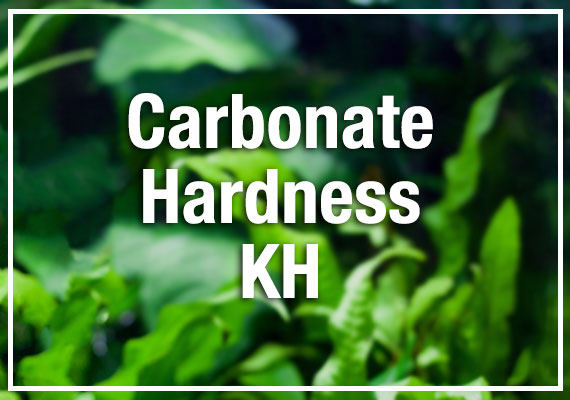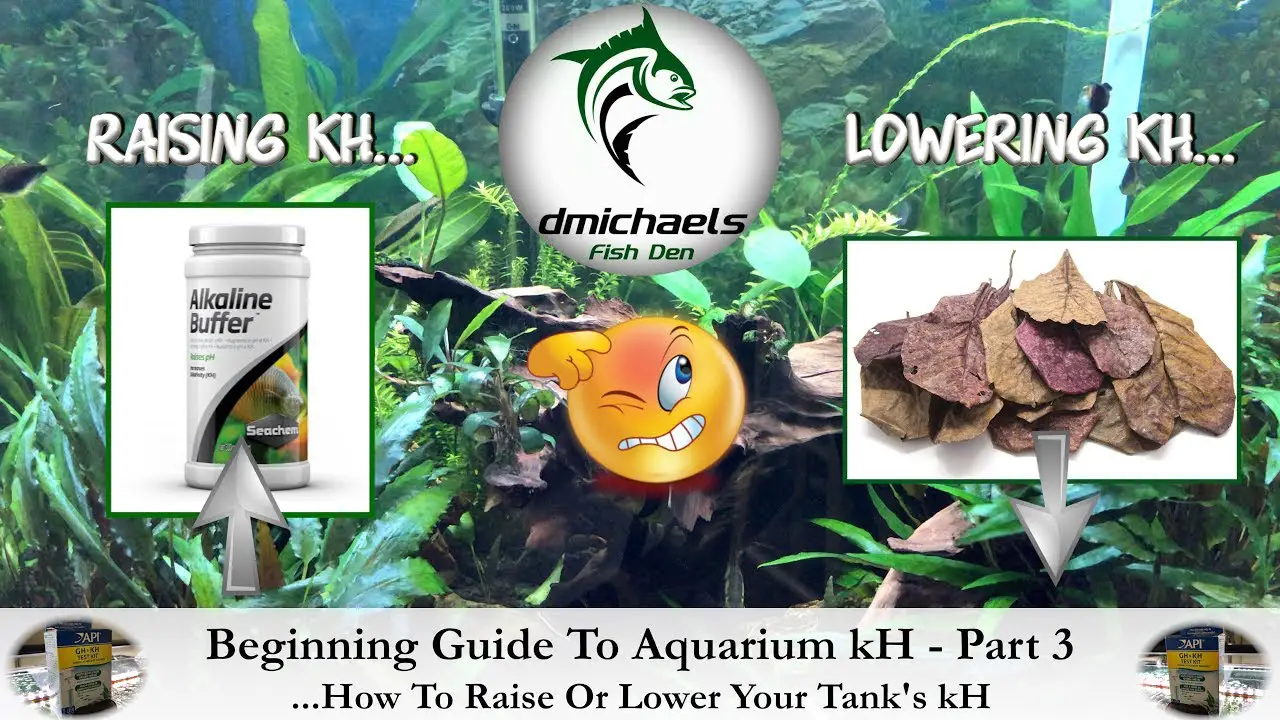To lower KH (carbonate hardness) in an aquarium, the best approach is to use a reverse osmosis (RO) filter. This type of filter can remove up to 95% of carbonates from the aquarium water. Additionally, you should perform frequent partial water changes using RO or distilled water and avoid overstocking your tank with fish or other aquatic life as this will increase KH levels due to increased waste production.
Finally, consider adding plants that absorb carbon dioxide such as Java moss; these plants utilize CO2 which depletes KH levels in the tank. If all else fails and none of these options work for you, try adding a commercial pH buffer product designed specifically for lowering KH levels in aquaria.
- Test the KH levels in your aquarium: The first step to lowering KH is to test the current level of KH in your aquarium. This can be done using a water testing kit specifically designed for measuring alkalinity and hardness levels.
- Reduce carbonate source: Once you have tested the water, it’s time to reduce any sources of carbonate that may be increasing the KH levels in your tank. Carbonates are often present in tap water as well as substrate materials like crushed coral or aragonite sand, so reducing these sources will help lower your tank’s KH level over time.
- Reverse osmosis filtration: One of the most effective methods for lowering KH is by using reverse osmosis (RO) filtration systems which filter out all dissolved minerals from tap water including calcium, magnesium and other ions that increase alkalinity levels such as bicarbonates and carbonates.
- Chemical buffers: Chemical buffer solutions can also be added to freshwater tanks to adjust pH and maintain stable conditions over time. These products are usually formulated with phosphoric acid or sodium bisulfate which helps reduce alkalinity without significantly altering other parameters such as pH or hardness.
How to Lower KH in Freshwater Aquarium?
One of the most important things you can do to lower KH in your freshwater aquarium is to use a reverse osmosis filter. This type of filter will remove a large amount of dissolved solids from your water, helping to reduce the total alkalinity levels. Additionally, frequent partial water changes are necessary – aim for 20% every couple weeks or so – in order to bring down KH without causing any drastic shifts in pH that could harm your fish and plants.
Lastly, it’s best practice to monitor KH regularly using an accurate test kit, as this will allow you make adjustments more effectively if needed.
How to Lower GH And Kh in Aquarium?
Lowering GH and KH in an aquarium can be done with a reverse osmosis (RO) unit. RO units contain a membrane that filters out most of the minerals, such as calcium and magnesium from the water. This creates water with very low levels of dissolved minerals, making it ideal for fish adapted to softer waters.
Be sure to add back essential trace elements after using an RO unit, either through bottled additives or by mineralizing your own tap water before adding it to the tank.
Is High Kh Bad for Fish?
High KH levels in an aquarium can be detrimental to fish health, as it increases the pH level of the water and makes it more alkaline. This can cause stress for some species of fish that require a low-pH environment, leading to diseases and other issues. Additionally, high KH levels can interfere with certain medications used to treat illnesses in fish tanks.
Therefore, it is important to monitor your tank’s KH levels regularly and take action if they become too high.
How to Lower KH in Reef Tank?
One of the most important things to do when trying to lower KH in a reef tank is to use reverse osmosis or RO/DI filtration. This type of filtration removes dissolved solids, including alkalinity and carbonates, from aquarium water leaving it with an extremely low KH level. Additionally, regular partial water changes can help reduce KH levels as well as dosing with liquid acid buffers like Seachem Reef Buffer or Brightwell Aquatics NeoBuffer which can help keep pH stable at lower levels.
How to Lower KH in Saltwater Aquarium?
Lowering KH in saltwater aquariums is an important part of maintaining a healthy aquatic environment. There are several methods that can be used to lower KH levels such as water changes, using reverse osmosis (RO) or deionized (DI) water, and adding chemical buffers. Water changes are the most common way to reduce KH as it helps dilute any existing acids present in the aquarium which lowers pH and therefore reduces KH.
RO/DI water also helps reduce KH but should only be used if other more natural methods fail due to its potentially damaging effects on fish and corals when used too frequently. Chemical buffers such as sodium bicarbonate, potassium chloride, magnesium sulfate, calcium carbonate and others can be added directly into your aquarium by following manufacturer’s instructions carefully for proper dosing amounts.
What is KH in Aquarium?
Kh, or carbonate hardness, is an important factor in aquarium water quality. It measures the amount of carbonate and bicarbonate ions present in the aquarium water. Kh provides a buffer to keep pH stable and helps maintain a healthy environment for fish and invertebrates.
A higher Kh level will help protect against sudden changes in pH levels due to biological processes or chemical additions. If your aquarium has soft water (low kh), it may be necessary to add buffers like baking soda or crushed coral to increase the Kh level for optimal health of aquatic life forms.
How to Lower pH And KH in Aquarium?
To lower pH and KH in your aquarium, you’ll need to use an acidifying product such as a buffer or carbon dioxide. Additionally, regular partial water changes can help keep the levels low by removing minerals and other substances that raise pH and KH. Be sure to monitor your tank’s parameters regularly to ensure that the levels are staying within their desired range.
How to Lower KH in Shrimp Tank?
Lowering KH in a shrimp tank is an important part of keeping your shrimp healthy. The best way to do this is by using reverse osmosis water, which has been filtered and purified. Additionally, you can add driftwood to the aquarium as it will naturally leach minerals from the water that lower KH levels.
You should also consider regularly performing partial water changes with dechlorinated tap or RO (reverse osmosis) water to keep KH levels in check.

Credit: fishlab.com
What is the Fastest Way to Lower Kh in an Aquarium?
Lowering KH in an aquarium is essential for maintaining a stable pH level and providing the optimal environment for aquatic life. The fastest way to lower KH in an aquarium is by adding chemicals such as sodium bicarbonate, baking soda, or potassium chloride. By adding these chemicals directly into your tank water, you can quickly reduce the hardness of your water and balance out the alkalinity.
In addition to this direct approach, lowering KH levels can also be achieved through regular partial water changes and frequent gravel vacuuming as both processes help to remove some of the dissolved minerals present in the tank which contribute towards high KH levels. To ensure that you don’t over-lower your KH level it is important to regularly test it with a reliable test kit so you know when to stop adding chemical solutions or performing water changes/vacuumings.
What Causes High Kh in Aquarium?
KH, or carbonate hardness, is one of the most important factors to consider when it comes to keeping a healthy and successful aquarium. High KH levels can cause a range of problems for your fish and plants, so it’s important that you understand what causes high KH in an aquarium. The main thing that affects how much KH is present in your tank is its pH level.
A higher pH will increase the amount of carbonates in your water which raises the KH reading. Another common culprit for high KH readings is tap water – many areas have very hard tap water with elevated levels of calcium and magnesium bicarbonates which contribute to higher than normal readings on tests strips. In some cases, too much CO2 from pressurized systems or other sources may also cause high levels of KH if not monitored properly.
Finally, if you are using gravel substrate or decorations made from natural materials like limestone these can leach minerals into the tank over time causing increasing levels of carbonates as well as raising other parameters such as GH (general hardness) and PH over time too.
Does High Kh Affect Fish?
Yes, high KH can affect fish. High KH levels result in a higher pH level in the water, which can cause stress and even death for some species of fish if it gets too high. High KH also causes carbonate hardness to increase, resulting in a decrease of available oxygen for the fish and other aquatic life forms.
In addition, high KH makes it harder for acidifying substances like nitrates to be removed from the water column as they will bind to carbonates instead. This can lead to an accumulation of harmful toxins that could eventually lead to disease or death amongst your tank inhabitants. Additionally, when there is a large difference between carbonate hardness (KH) and general hardness (GH), this imbalance can cause physical distress on some types of fish due to their inability to regulate their electrolyte balance properly which may further add stress or even death in extreme cases.
Therefore, it is important for aquarium owners who are keeping sensitive species such as discus or African cichlids should make sure that they frequently monitor their tanks’ KH levels so that any sudden changes are detected quickly and corrected before any serious harm occurs.
How Do I Adjust Kh And Gh in My Aquarium?
Adjusting KH and GH in an aquarium is vital for the health of your fish, plants, and other inhabitants. To properly adjust these two parameters, it’s important to understand what they are and how they work. KH stands for carbonate hardness and measures the buffering capacity of water – basically its ability to resist changes in pH. GH stands for general hardness which measures calcium, magnesium and several other minerals dissolved in the water.
Both of these parameters need to be balanced correctly as too little or too much can cause issues with your tank’s environment such as stunted plant growth or disease among your fish population. The best way to adjust these levels is by using a test kit specifically designed for measuring KH/GH values; this will allow you to accurately measure both parameters so that you can make adjustments accordingly with additives like baking soda or limestone chips if needed. Additionally, adding live aquatic plants into the setup can help keep natural balance over time since they absorb nutrients from the water including CO2 which helps increase KH levels while also keeping pH stable at optimal ranges depending on species present in your aquarium.
As long as you monitor your tanks regularly with a test kit and take appropriate steps when necessary, adjusting KH/GH should not be too difficult!
Beginning Guide To kH Part 3 – How To Raise Or Lower A Tank’s kH…
Conclusion
Overall, lowering KH in an aquarium is a relatively straightforward process that can be achieved by using substances like peat moss or distilled water. Regular water changes and checking the pH levels are essential to ensure that KH does not become too high or too low for your fish to thrive. With careful monitoring and maintenance, you can keep your tank’s KH level within the optimal range for a healthy aquatic environment.

